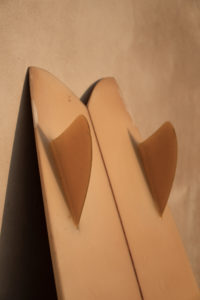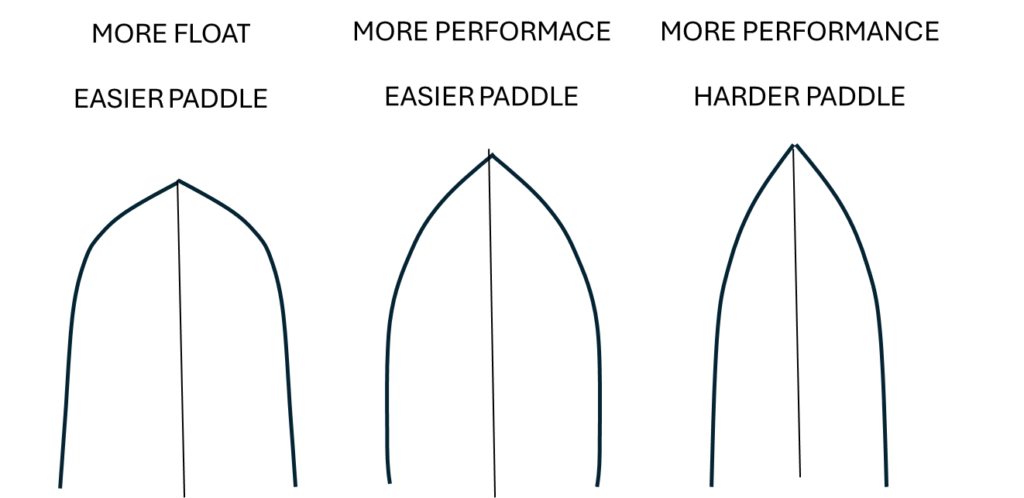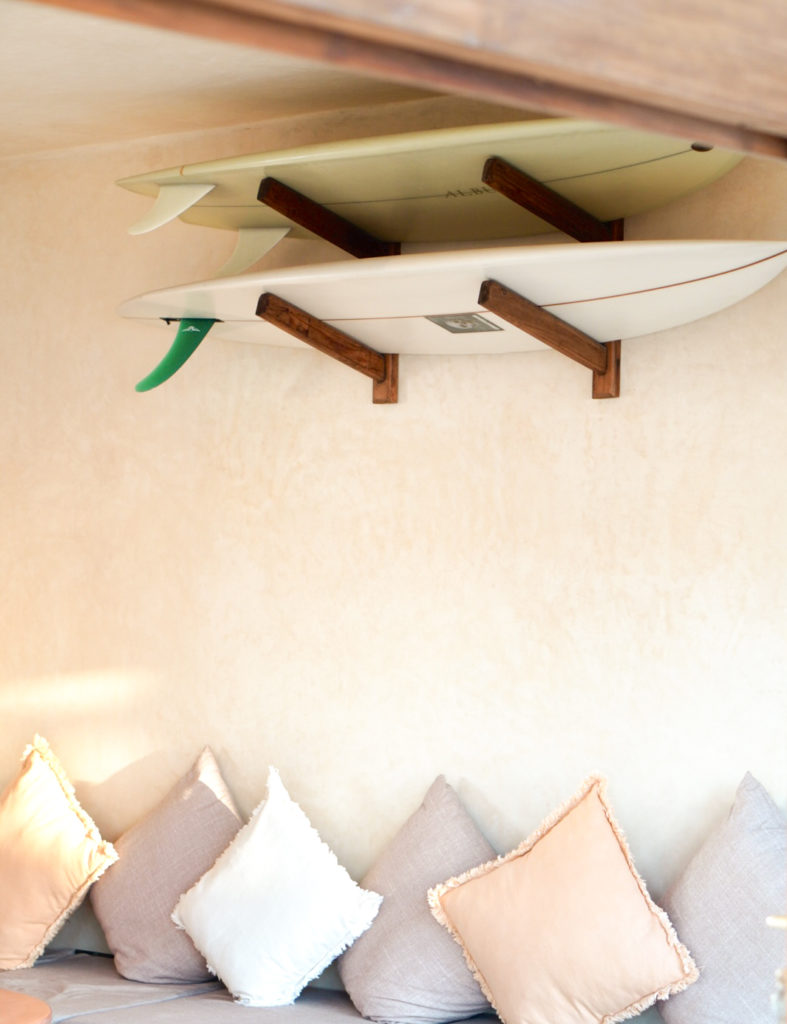Surfboards Explained: A guide to finding your stick
With an industry over 70 years old , surfing has sky-rocketed in its innovation for producing the best ride possible, in a plethora of conditions. If you can imagine it you can probably find it, from longboards over 9ft to twin fin pocket rockets at 5ft 2, but what’s the point of all these different shapes and styles? How different do they feel, and what do you need in what conditions? While there are no rules, certain boards are better suited to different conditions and styles of surfing. Welcome to surfboards explained.

There are around 4 key focal points of a surfboard that can influence how it rides. These are:
- length
- thickness
- nose
- tail
- end setup
So, let’s start with the most obvious.
LENGTH
The board length is the distance from its tail to its nose, which shapers measure in feet (ft) and inches (“). Length is often the clearest indicator of a board’s volume, or how much it floats in the water, how easy it is to paddle, and therefore how easily you will catch a wave.
To put this into real terms, a board that is 7ft will typically catch a wave much easier, with less paddle power than a board that is 5ft 6”.
This means that if you are a rookie , you will benefit from larger boards until you build your paddle power.
However, longer boards aren’t just favored by those learning to surf. Longboards, or ‘logs’ are boards longer than 9ft with largely consistent width from nose to tail. These boards are made for logging styles, including cross-stepping and nose-riding , which harnesses the power of physics and counterbalancing to let you cruise along the face on the tip of the board. This is only possible due to the longer length of the board.
THICKNESS
The thickness of your board dictates how maneuverable it is on the face of the wave, particularly the thickness of the rails (the sides). For example, turning onto the face on the wave after your pop-up will be easier on a board with thinner rails than one with thicker rails.
However, a thinner board will require more paddle power to catch a wave, and more refined balance to stay on the wave. This is because the more thickness a board has, the more it will float. Typically, the more advanced the surfer the thinner the rails of the board.
How thickness interacts with length depends on the type of board. For example, ‘ guns ‘ are longer boards that are narrow, with sharp noses. These are for big wave surfing only.
NOSE
The nose of one of the most characteristic parts of a surfboard. How much volume is in the nose of a surfboard dictates how easily you can drop into larger waves, as well as the board’s stability and maneuverability.

TAIL
There are 5 main types of surfboard tails you will often find. The tail indicates the level of control you have with your board, particularly on bigger waves. Beginner surfers will want to stick with square or rounded tails that perform well in a range of conditions. However, if you are advancing, you may want to investigate what else is out there to follow the conditions you are surfing in most often.
- Pintail: Pintail surfboards are common on all types of boards, from shortboards to logs. They are particularly useful for bigger waves, as they enable you to hold speed and control.
- Square tails: Square, or squash tails are the most popular type of tails. The two points at the back act to release water flowing off the back of the board, allowing you to turn easily in small waves.
- Rounded tails: These are common for longer boards, as they allow you to easily push the tail for a smooth and long turn.
- Fish or swallowtails: Smaller waves follow this unique shape. They appear on all sorts of boards, from twin-fin shortboards to 9ft logs. They keep the tail pretty wide, allowing you to keep speed in slower wave sections. This tail shape originates from the hollow waves of San Diego.
- Asymmetrical tails: Perhaps the wildest tail out there, these tails are specific to whether you are goofy or regular. The shorter side of the asymmetrical tail is for heel-edge, and backhand turns, while the sharper, longer tail edge is for toe-side turns.

END SET-UP
The fin setup can make your surfing feel very different in several ways. Finding out which setup you prefer is very personal and may take you some trial and error, as your purposes can affect your control, drive, and speed. However, there are certain setups that you are more than likely to get along with.
These end types can include:
- Thruster: This is the most common fin setup and includes one central fin positioned just above and to each side. This 2+1 setup allows you directional control, especially in slightly messy conditions. This is a great setup for beginners and advanced shortboarders alike.
- Twin fin: This is the setup for speed. This is like the thruster, but without the center fin, just one fin on either side of the board. They’re nothing new, having come about at some time in the 40’s, but they’re having a resurgence. They’re perfect for if you’re a shortboarder, who finds your normal board lacking luster in smaller and weak waves. Twin fin boards tend to have more volume, and combined with the twin fin setup send you speeding down the line.
- Single fin: Single-fin surfboards feature one large fin in the center of the tail. They allow your board to have a bigger turning radius, making it easier to turn larger boards. However, due to the larger size of the fin, initiating these turns can be harder. Another drawback can be using a single fin on a smaller board during messy conditions, as you may lack control during your paddle out.






